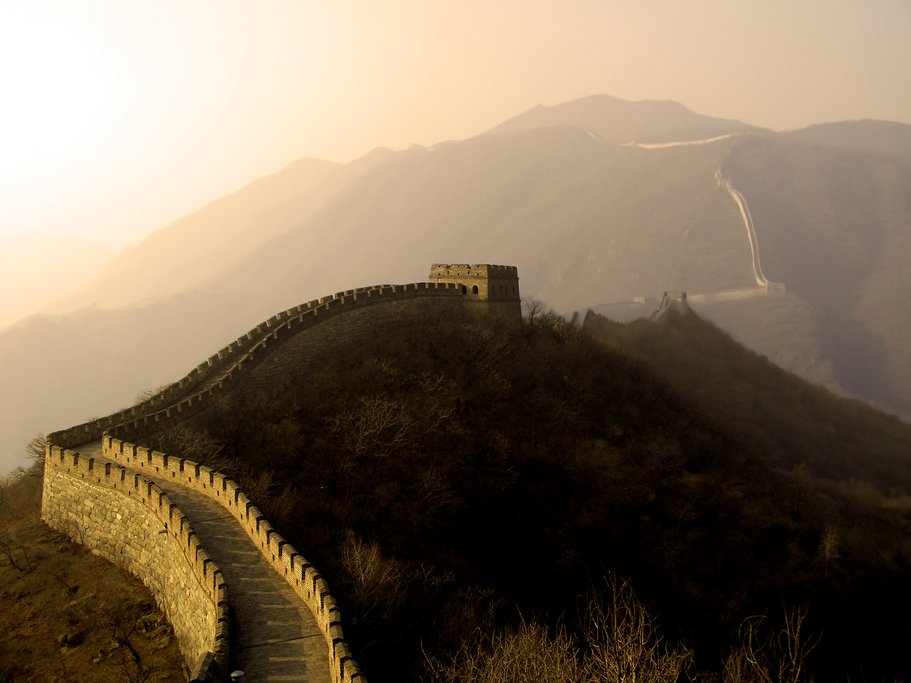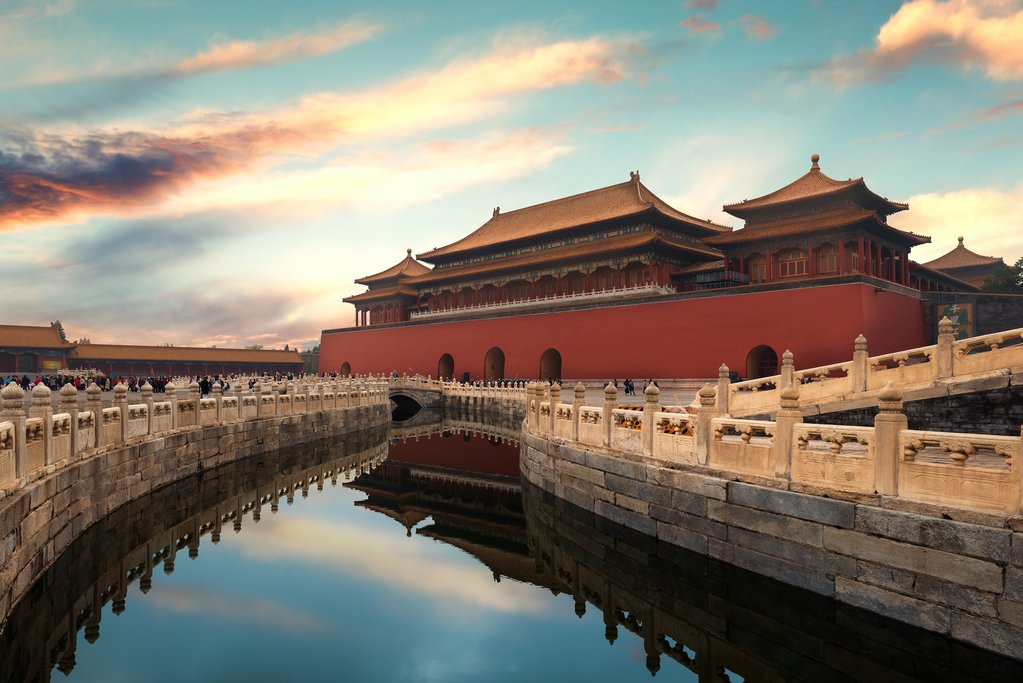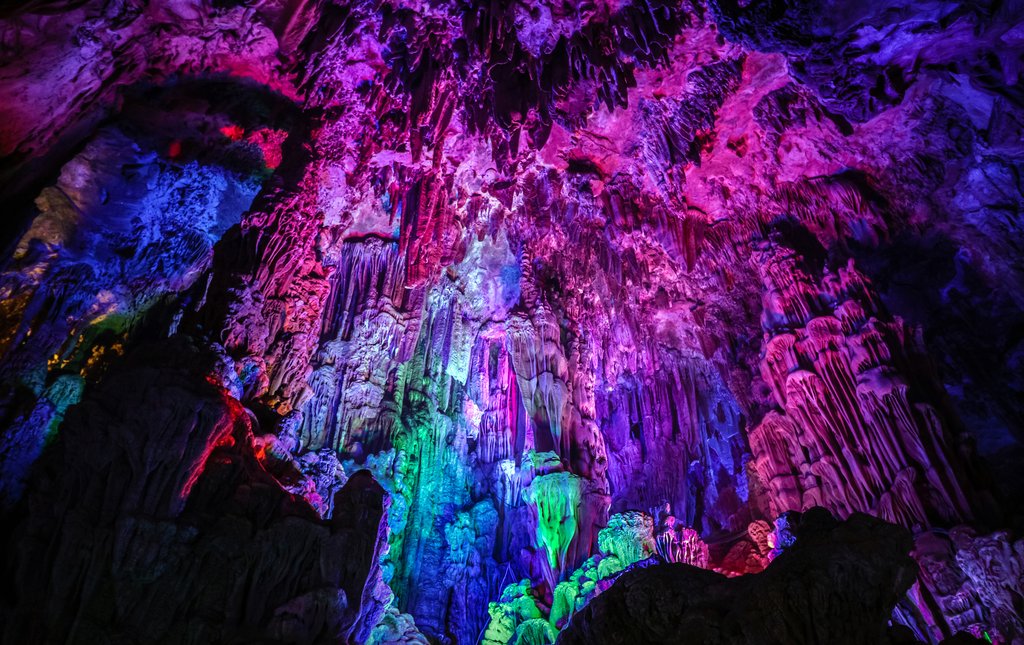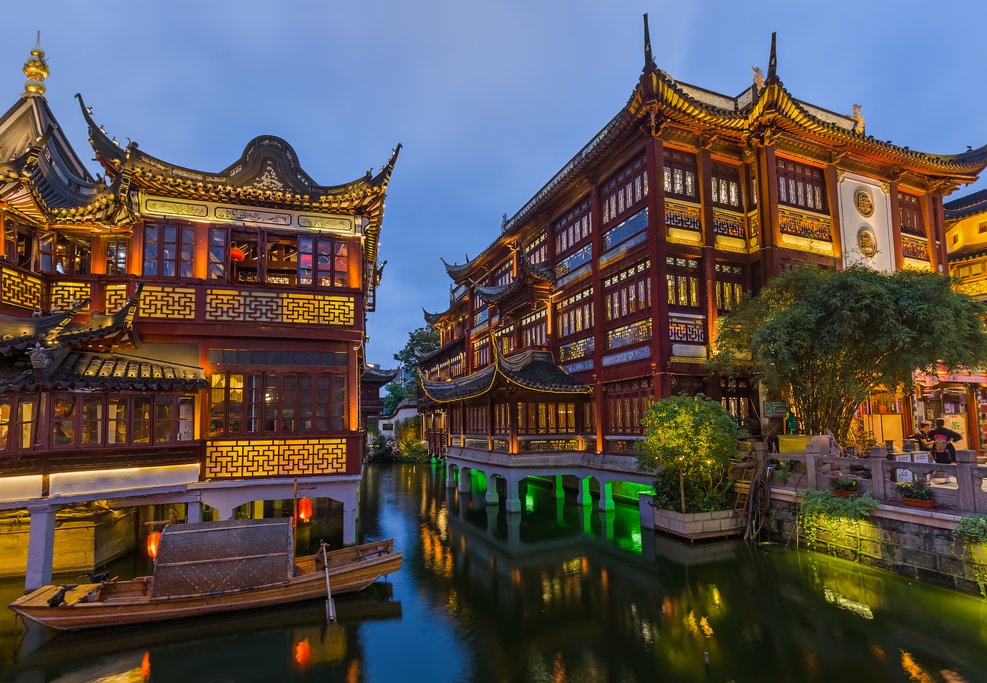
China's Highlights - 10 Days

Highlights
- Visit the Great Wall of China, one of the 7 Wonders of the World
- See the thousands of Terracotta Warriors in Xi'an
- Discover China's natural wonders, like the rice terraces of Longsheng
- Tour both historic and modern neighborhoods in Shanghai
Brief Itinerary
| Day | Highlights | Overnight |
|---|---|---|
| Day 1 | Arrival in Beijing | Beijing |
| Day 2 | Beijing City Tour: Famous Historical Sites | Beijing |
| Day 3 | Beijing City Tour: Architectural Highlights | Beijing |
| Day 4 | Beijing to Xi'an by Bullet Train | Xi'an |
| Day 5 | Xi'an Full-Day Tour | Xi'an |
| Day 6 | Xi'an to Guilin | Guilin |
| Day 7 | Longsheng Full-Day Tour | Guilin |
| Day 8 | Guilin to Shanghai | Shanghai |
| Day 9 | Shanghai City Tour | Shanghai |
| Day 10 | Departure from Shanghai |
Detailed Itinerary
Day 1: Arrival in Beijing

Welcome to China!
With a population of over 21 million people, Beijing is the most densely populated capital in the world. As one of the Four Great Ancient Capitals of China, this metropolis has been the seat of power in the country for eight centuries. It's home to expansive historic landmarks like the Forbidden City and Temple of Heaven, which date back to the Ming Dynasty (1368-1644). Also here is the Summer Palace, a lakeside royal retreat and imperial garden during the Qing Dynasty (1644 to 1911).
However, Beijing is also a shining example of modernity. Some of the tallest skyscrapers in the world exist here. Also, new developments, high-rise apartments, and shopping malls all but engulf historic hutong alleyways and ancient courtyard houses. This city is a megalopolis hurtling towards the future while keeping one foot firmly in the past, and you'll discover its highlights.
Upon arrival at Beijing Capital International Airport, you'll meet your private guide at the arrival hall and transfer to your hotel in downtown Beijing. After check-in, you'll have the remainder of the day free to head out and explore. Or, if you're a bit jet-lagged, you can stay in, relax, and enjoy the hotel amenities.
Day 2: Beijing City Tour: Famous Historical Sites

After breakfast at your hotel, you'll take a guided tour of some of Beijing's most famous historical sites. Your first stop is the Summer Palace. This historic royal retreat is located in the northwest outskirts of Beijing and is the largest imperial garden in China, taking up 1.1 square miles (2.9 square km). It's a mere 15 minutes by car from Beijing, but when you arrive you'll feel like you stepped back in time.
After the Summer Palace, you'll head into the heart of Beijing and Tiananmen Square, the world's largest city square. Built in 1651 and progressively enlarged over the centuries, this massive public space is surrounded by government buildings. These include the Great Hall of the People, National Museum of China, and the mausoleum of revolutionary leader Mao Zedong.
You'll see an enormous portrait of Chairman Mao on the square's north end at Tiananmen Gate. This is the entrance to the Forbidden City (officially the Imperial Palace Museum), which was constructed in 1415 during the Ming Dynasty. You'll enter and tour this UNESCO World Heritage Site, which will surely leave you awestruck. It's a vast complex as big as a neighborhood and has a long history: it served as the Chinese imperial palace from the Ming Dynasty in 1420 through the Qing Dynasty in 1912.
A walking tour of the Forbidden City takes at least a couple hours. This ensures you see the majority of its some 980 buildings spread across 180 acres (72 hectares). Among other things, you'll see the 32-foot (10-meter) high city walls, the Imperial Garden, ceremonial rooms, emperor's living quarters, and galleries featuring ancient imperial artifacts. You can expect crowds, too, as the Imperial City hosts a staggering 80,000 visitors each day.
In the afternoon, give your legs a rest with a 30-minute pedicab tour through the hutongs of Beijing. Hutongs are narrow alleyways that crisscross through old neighborhoods in the city. Some of these alleys go as far back as 800 years to the Yuan, Ming, and Qing dynasties. There's a traditional Chinese folk culture here, and many people still live in the old houses that line the hutongs. Sadly, they are a fast disappearing sight as city developers move in to modernize these areas.
Following the tour, you'll be returned to your hotel where you'll have the rest of the evening to enjoy on your own.
Day 3: Beijing City Tour: Architectural Highlights

You're in for a treat as today you'll visit one of the New Seven Wonders of the World: the Great Wall of China. Because this ancient fortification is so massive, it's separated into various sections open to visitors. The area you'll be visiting is Mutianyu, one of the best-preserved portions of the Great Wall. Located 40 miles (64 km) north of Beijing, it was built in 1368 ACE by Xu Da, a general in the army of Zhu Yuanzhang, the founding emperor of the Ming Dynasty.
This section of wall stretches for 13 miles (22 km) and is comprised of 22 stone watchtowers. Sitting atop steep hills blanketed in rich green pines and cypress trees, the views from here on a clear day are nothing short of breathtaking. Walking these ramparts you'll easily understand how this landmark became a prominent symbol of China's history and heritage.
When you arrive at Mutianyu, you can ride the cable car up to the ramparts and then hike back down along the wall for a once-in-a-lifetime experience. After the visit, you'll transfer back to Beijing and visit a landmark of China's recent history: Olympic Park. This complex was built for the 2008 Summer Olympics and includes a number of interesting buildings including the Bird's Nest (National Stadium) and Water Cube (aquatics center).
Day 4: Beijing to Xi'an by Bullet Train

Chat with a local specialist who can help organize your trip.
In the morning, your guide will take you to the Temple of Heaven, one of Beijing's most famous landmarks. This complex sits on 670 acres (271 hectares) and is actually comprised of a few buildings. Construction began back in 1407 under the Yongle Emporer, who also commissioned the building of the Imperial City. For hundreds of years spanning the Ming and Qing Dynasties up until 1900, this was the main imperial temple where emperors prayed to heaven for a good harvest.
Your guide will lead you on a tour of the complex. The first stop is the Hall of Prayer for Good Harvests. This large, three-tiered structure was where the emperors would come for annual prayer ceremonies. Other iconic buildings you'll visit include the Circular Mound Altar, which was the site of winter solstice ceremonies, and the Imperial Vault of Heaven, a circular building constructed in 1530 and which housed the stone tablets used in the harvest prayer ceremonies.
In the afternoon, you'll head to the railway station and hop on a bullet train for the approximately five-hour ride southwest to Xi'an. This city is notable for many things. With over 12 million residents, it's the most populous city in north-central China. It's also the oldest of the country's Four Great Ancient Capitals. It was founded way back in 202 BCE and has served as the capital city of 13 imperial dynasties.
Perhaps most famously, Xi'an is home to the Terracotta Army. This massive collection of incredibly detailed, life-size clay sculptures depict the armies of Qin Shi Huang. He was the founder of the Qin Dynasty and the first emperor of China, reigning from 221 BCE to 210 BCE. Upon Qin's death, this clay army was buried with him so as to guard him in the afterlife.
Upon arrival in Xi'an, you'll transfer to your hotel, check-in, then head to the historic Muslim Quarter. Located in the city center, the old buildings lining these narrow streets are home to Xi'an's Muslim, or Hui, community. It might come as a surprise, but Islam is the most enduring of all faiths in the city. It was introduced by Arab merchants during the Tang Dynasty and flourished during the Yuan Dynasty (1279-1368). Today the Muslim Quarter is a popular area with many shops and street-food vendors.
Day 5: Xi'an Full Day Tour

A car will meet you in the morning at your hotel for the one hour drive east of Xi'an to Mount Li, home to the Terracotta Army Museum and the famous life-size warrior sculptures.
The excavation site where these earthen statues were found is part of a larger necropolis: the mausoleum of Emperor Qin Shi Huang. He was the founder of the Qin Dynasty and died in 210 BCE. This enormous site covers approximately 38 square miles (98 square km), and its discovery in 1974 represents one of the most important archeological finds of the 20th century.
The terracotta warrior sculptures were created to be symbolic guardians of Qin's burial tomb and thus protect his spirit in the afterlife. And the hundreds of thousands of artisans and government workers tasked with building them spared no expense. They created thousands of figures, all incredibly detailed and distinct according to their roles within the army.
Touring the massive excavation pits, you'll see various warriors, chariots, and cavalry figures. Originally, they were positioned around the burial mound as if on guard and standing at attention in a military formation. There are also non-military figures in certain excavation pits that represent musicians and even acrobats.
After the Terracotta Army Museum, you'll drive back to Xi'an and visit the Shaanxi History Museum. This impressive museum is located in a Confucian temple and is home to 370,000 artifacts spanning the Zhou to Tang periods (1100 BCE to 907 ACE).
You can then head to the adjacent Giant Wild Goose Pagoda. This seven-story Buddhist pagoda is made of solid brick and was constructed in 652 ACE. As for the unique name, it derives from a Buddhist legend of a "giant wild goose" that fell out of the air dead in front of a group of monks. Supposedly this was a sign telling the monks to be more pious, so they built a pagoda on the very spot where they found the goose.
In the evening, you're in for a treat when you see the Tang Dynasty Show. This two-hour performance showcases the history and culture of the prosperous Tang Dynasty (618 to 907) through music and interpretive dance. After the show, you'll return to your hotel.
Day 6: Xi'an to Guilin

In the morning, you'll transfer to the airport for the two-hour flight to Guilin. Located in southern China towards Hong Kong, the area around Guilin is known for its subtropical climate, tranquil rivers, and beautiful rural landscapes abounding with green karst mountains.
Your tour of this incredible region begins right away. Upon arrival in Guilin, a guide will pick you up for the half-hour drive to Reed Flute Cave. This massive limestone cavern was named after the reeds that grow outside of it, which locals do indeed use to make flutes. Inside, the cave is a veritable wonderland of rock formations, stalactites, and stalagmites, which are lit up in a dizzying array of colors via artificial lighting.
Your guide will then drive you to Elephant Trunk Hill, which is located at the confluence of the Taohua River and Li River. This unique rock formation extends into the river in the shape of an elephant appearing to have its head bowed and drinking water. After visiting Elephant Trunk Hill, you'll transfer to your hotel in Guilin for check-in.
Day 7: Longsheng Full-Day Tour

After breakfast, you'll hit the road with your guide on a three-hour drive to the rural, mountainous region of Longsheng. This area is famous for its terraces of green rice fields, which climb up the mountain slopes from the river valley and reach an elevation of about 2,600 feet (800 meters). The scaley look of the terraces, combined with the sharp mountain ridge, earned this landscape the moniker "Dragon's Backbone." The terraces here are also historic and date back over 700 years.
Longsheng is also home to some rich culture. There are 10 ethnic tribes who call this region home, and today you'll visit the villages of the Yao and Zhuang people. One particular treat is that you'll see the Long Hair Show. The local Yao women only cut their hair once in their lives, on their 18th birthday, and have an average hair length of 7.5 feet (2.3 meters). The "show" is a tradition in which these women let their locks down and wash their hair in the river before elaborately tying it up in braids and head wraps.
After the village, you'll transfer back to Guilin and cap the day with a tour of a factory that produces fine South China Sea pearls. Then you'll return to your hotel and will have the evening free.
Day 8: Guilin to Shanghai

At the appropriate time, you'll transfer to the airport in Guilin and catch a two-hour flight to Shanghai, a global economic powerhouse and historic port city on the Yangtze Delta. A guide will meet you upon arrival at the airport and transfer you to your hotel for check-in.
After unpacking, you can head out and explore. Shanghai is a modern, dynamic city that offers great food, historic sights, and plenty of high-end shopping. A good start is to visit a section of the waterfront known as the French Concession. It was controlled by the French from 1849 to 1943 and is known for its wide, leafy boulevards. Today it's a bohemian enclave abounding with boutiques, wine bars, breweries, cafés, and trendy restaurants.
You can also visit Tianzifang. This is another artsy area comprised of maze-like alleyways and lined with cool bars and restaurants, galleries, artisanal craft shops, and cafés. You'll have the evening free to hang out in these neighborhoods or stay in and relax in your hotel.
Day 9: Shanghai City Tour

After breakfast, you'll embark on a full-day excursion with a local guide. Your first stop is the Shanghai Museum, located in the upscale Huangpu District at People's Square. This modern building houses China's foremost collection of ancient artifacts dating from Neolithic times. There are over 120,000 items that include bronzes, ceramics, calligraphy, and jade items. Also here are paintings, sculptures, and even furniture dating to the Ming and Qing dynasty.
Next, you'll visit the nearby Yu Garden. "Yu" translates to "pleasing and satisfying," and the five acres that comprise this historic green space embody those traits perfectly. Dating back over 400 years to the Ming Dynasty, the landscaping features exotic flora like spring bamboo and a ginkgo tree as old as the garden itself. Other impressive design elements include pavilions, ponds, tea houses, rockeries, cloisters, and covered bridges.
You'll then stop at the Jade Buddha Temple, which is the most famous Buddhist temple in Shanghai. It was originally built in 1882 to house two large statues of Buddha sculpted from pure white jade. One, a Buddha in a sitting position, is 6.4-feet (2-meters) tall and weighs three tons; the other, a reclining Buddha, is 3-feet (1-meter) long. The original temple was destroyed during the fall of the Qing Dynasty, but the statues were saved and the temple that exists today was built over the same site in 1928.
Afterward, take a walking tour of Nanjing Road the main commercial street of Shanghai and one of the world's busiest shopping districts. You'll end the day with an elevator ride to the top of the Oriental Pearl Tower for amazing views over Shanghai from 1,152 feet (351 meters).
Day 10: Departure from Shanghai

It's time to say goodbye to China! At the designated time, you'll be picked up from your hotel in Shanghai and transferred to the airport for your departure home. Safe travels!
